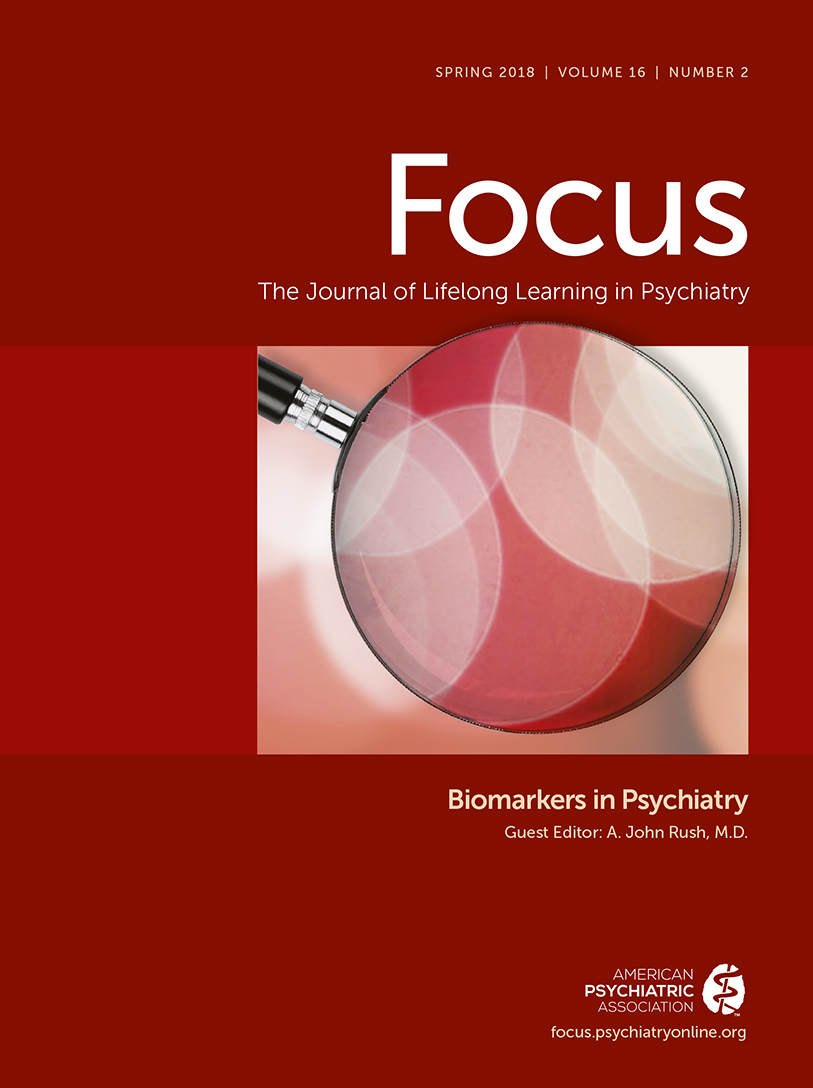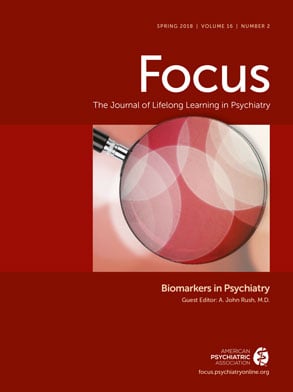Although depression is not the cardinal diagnostic feature of bipolar type I and type II disorders, it has been found to play a larger role than mania or mixed symptoms. Expert recommendations for the treatment of bipolar disorder remain broad, because no particular medication works for every patient. Treatment regimens must be individually tailored. This article summarizes the findings of several studies examining the effectiveness of different treatment regimens across patients.
The defining feature for the diagnosis of bipolar type I disorder is the occurrence of a manic episode, whereas for bipolar II disorder, it is the occurrence of a hypomanic episode (
DSM-5). Depression may or may not be present in the former but must be present in the latter. Although depression is not the cardinal diagnostic feature of these disorders, it has been found to play a larger role than mania or mixed symptoms. Judd and colleagues (
1) showed that patients with bipolar I disorder are three times more likely to experience depressive symptoms than manic symptoms and five times more likely to experience depressive symptoms when compared with mixed symptoms. Judd and colleagues (
2) also showed that patients with bipolar type II disorder are 39 times more likely to experience depressive symptoms than hypomanic symptoms and 22 times more likely when compared with mixed symptoms. Judd concluded that the depressed phase is likely to be undertreated, but the controversy remains on whether to prescribe antidepressants.
The Systematic Treatment Enhancement Program for Bipolar Disorder (STEP-BD), sponsored by the National Institute of Mental Health, enrolled patients with bipolar disorder to evaluate different treatments and their effectiveness. The exclusion criteria were limited in order for the results to be more generalizable. One arm within the STEP-BD program examined the efficacy of adjuncitve antidepressant therapy in bipolar depression compared with mood stabilizers alone. Sachs et al. (
4) looked at 366 patients with bipolar depression who were treated with a mood stabilizer plus an antidepressant, either bupropion or paroxetine or a mood stabilizer plus matching placebo. The primary goal of the study was to determine whether adjunctive antidepressants showed any greater efficacy than placebo plus mood stabilizer while monitoring for any increase in treatment-emergent mania. They found that the use of an antidepressant showed no increase in efficacy and no increase in the rate of mood switches when compared with placebo. Mood stabilizers and antidepressants were equally ineffective at a similar rate (27%).
Whereas individual arms of the STEP-BD study excluded patients who had already been included in trials of study medications, for example, Sachs and colleagues (
4) excluded subjects who had a prior history of nonresponsiveness to bupropion and paroxetine; they did not comment on how many other trials of antidepressants patients may have previously failed. This could be an important point, because data now show that the greater number of trials of antidepressants a patient fails, the more likely he or she is to be nonresponsive to any antidepressant. Amsterdam et al. (
3) looked at patients with bipolar type II disorder and examined the response rate of patients based on the number of previous trials of antidepressants. The results showed that patients’ responsiveness to antidepressant therapy worsened with each subsequent trial. The STEP-BD study that showed no greater efficacy of antidepressants compared with mood stabilizers alone may not have taken this into account. Of course, the literature is mixed on the efficacy of antidepressants and their role in treating bipolar depression. Altshuler (
5), in two separate studies, appears to have provided evidence that antidepressant treatment of bipolar disorder may have important clinical utility. How might we reconcile these disparate findings? The answer might possibly be related to the timing of the intervention and to the maturity of the disease process rather than simply an all-or-nothing phenomenon.
The consensus for treating bipolar disorder is, first, to stop the cycling using anticycling agents. The Texas implementation of medication algorithms provides clear recommendations on how to approach this. For those who continue to experience symptoms of mania, hypomania, or both, optimizing the first mood stabilizer followed by augmentation with a second mood stabilizer is the treatment of choice. For patients in the depressed phase, the recommendation includes the addition of lamotrigine or other agents that have shown efficacy for treating bipolar depression. It is only later in the algorithm that antidepressants might be considered. We suggest that this may not be advisable in light of the new findings by Amsterdam and colleagues (
3). In fact, it may be more appropriate to add an antidepressant earlier in the course, especially when depression is moderate to high-moderate in severity. In such patients, there is often an urgent need to relieve depression. It may no longer be as simple as saying that antidepressants are either effective or not effective in treating bipolar depression. Rather, it might be more accurate to say that antidepressants are beneficial when used at the right time and that repeated trials are not likely warranted.

